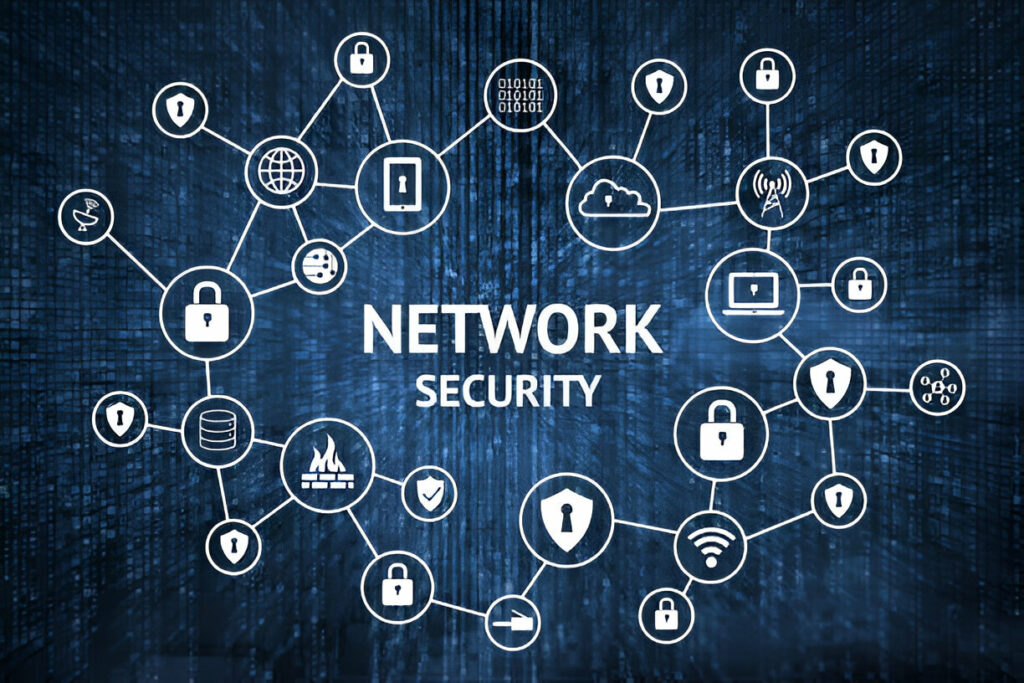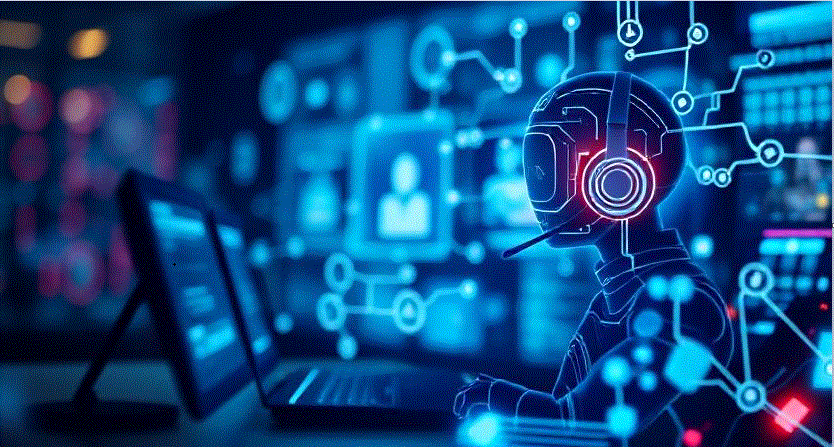In the ever-changing world of cybersecurity, access control is one term that is that is of major importance. In a time when cybersecurity breaches and data breaches are on the rise the significance of access control for security in networks is not overstated. It serves as a security guard, securing the doors for your network infrastructure and making sure only authorized devices and users have access. In today’s digital world access control is the foundation of effective cybersecurity measures. This article delved into the importance of access control within the field of network security as well as its practical applications and its role as a shield against cyber-attackers.
Kind Access Control in Network Security
Access control, as a context of security for networks, is a method that decides who or what can access certain resources within the network. They could include sensitive systems, sensitive data applications, and even physical devices. The core of access control is the capability to restrict or grant permissions by a predetermined list of guidelines and regulations. In practice, access control works according to the principle of least privilege, which means that it grants the users as well as devices minimal access rights required to fulfill their tasks. This reduces the threat and lowers the possibility of unauthorized access or breach. In assessing the most effective network security Rockford methods Access control remains the most important element that ensures the security of data and continuity.
Access Control Consists Of Several Components, Such As:
- Authentication: The process of checking the identity of a person or device attempting to access the network. Methods of authentication include passwords, biometrics, smart cards, or multi-factor authorization (MFA).
- Authorization: Following authentication, authorization is the process of determining what actions and resources the user or device is permitted to access. This involves assigning rights or privileges based on the role of the user or device’s credibility.
- Accounting: Often referred to as auditing, logging, or even logging. This feature keeps track of and logs the activities of the network to guarantee transparency as well as accountability.
- Access Control Lists (ACLs): ACLs are rule sets that control the flow of traffic that enters and leaves devices on networks, including firewalls and routers.
The Critical Role of Access Control in Network Security
The security of networks is a multifaceted issue, with a myriad of dangers lurking in the cyber world. Access control is an essential component to this complicated ecosystem that offers the following advantages:
1. Prevention of Unauthorized Access
Controlling access is the primary security measure against unauthorized users, as well as malicious hackers who try to gain access to networks. In terms of real-world scenarios, think about a financial institution that has an extensive database of sensitive customer data. Access control systems would make sure that only authorized personnel, or perhaps just certain departments, can access this information which reduces the chance of data breaches as well as insider dangers.
2. Limitation of Lateral Movement
One of the biggest threats that cybersecurity faces is the movement of attackers within networks. When an attacker gains access to the network, they typically try to access the network, shifting between systems to locate valuable assets. Access control is a way to limit this activity by restricting access to users based on roles and privileges, which limits the threat to a narrower portion of the system. security solutions for network security offered in Crystal Lake often focus on implementing access segmentation and role-based permissions to stop this kind of movement and limit the chance of a security breach.
3. Protection of Confidential Data
Many companies handle highly sensitive information, like information about trade secrets customer data, or intellectual property. Access control is crucial in safeguarding this delicate data by imposing strict access and permissions. An access control breach could result in a devastating loss of these valuable assets.
An instance of this can be seen in the Equifax breach in 2017. The credit journalism agency was hit with an opening of its data that exposed the personal data of nearly 147 million Americans. The breach was largely due to an incapability to control access that allowed hackers to gain access and steal subtle info.
4. Compliance and Regulatory Adherence
Many rules, including the General Data Protection Regulation (GDPR) and the Health Cover Movability and Accountability Act (HIPAA), require strict security events for access control. Infractions can lead to severe penalties and legal consequences. For example, a health facility should be sure only authorized employees can access the patient’s records. Access control measures ensure the security of the information and show compliance with laws like HIPAA. Companies seeking services for network solutions services Crystal Lake often demand solutions that are specifically designed to meet the requirements of these regulations quickly.
Real-World Success Stories: Access Control in Action
Although the concept of access control is convincing, its real value is demonstrated by real-world evidence of its effectiveness in deterring cyberattacks. Let’s look at a few noteworthy instances in which access control played a crucial function:
1. The Sony Pictures Hack (2014):
in 2014, Sony Pictures Entertainment became the victim of a well-publicized cyberattack. Access control could have banned this attack by applying stricter rules and ensuring that only official workers could access these critical possessions. Following the incident, Sony significantly bolstered its security measures to guard against any future attacks.
2. The NotPetya Ransomware Attack (2017):
NotPetya is a baffling ransomware variant, that was destroyed in 2017 and caused massive disruption throughout the world. It specifically targeted Ukrainian organizations however it quickly expanded across other countries and industries. Controlling access would have greatly restricted the ability of the ransomware to be able to spread further across networks.
3. The Target Data Breach (2013):
One of the additional well-known data care breaches, Board, the retail giant, was the victim of an attack from cybercriminals in 2013. Control devices for access, such as more effective division and isolation of networks could have impeded the attacks’ movement within the Target network.
These examples show that access control isn’t only a concept in theory but also a crucial safeguard against actual cyber threats.
The Evolution of Access Control
Access control isn’t an unchanging discipline. It changes as a response to the ever-changing strategies employed by cyber-based adversaries. Access control systems have evolved into formidable defenses as the digital world gets more complicated. The latest developments in access control include:
1. Zero Trust Architecture:
The trust model that has been in place for a long time, which states that the entities in an organization are deemed secure while those outside are not, is being challenged.
2. Role-Based Access Control (RBAC):
RBAC is a more gritty technique of admission control based on the user’s location within the organization. Microsoft’s Azure Active Directory and Amazon Web Services (AWS) Identity and Access Management (IAM) are two examples of RBAC implementations.
3. Biometric Authentication:
They are less prone to attacks using passwords and also provide an additional layer of security to admission control.
The Future of Access Control
These trends are expected to determine how access control will grow in the field of network security:
1. Artificial Intelligence (AI) and Machine Learning:
Machine learning and AI are integral in controlling access by enabling more adaptable and contextually aware decisions. These tools can assess users’ behavior, devices’ trustworthiness, and network anomalies in real time, enabling more informed decisions about access.
2. Blockchain and Decentralized Identity:
Blockchain technology can improve the security that access control devices provide. Decentralized identity systems enable users to manage their own digital identities and permissions, thereby reducing their dependence on central authorities.
3. IoT Security:
As the Internet of Things (IoT) continues to grow, access control needs to be efficient to protect the wide range of linked gadgets. Implementing access panels in IoT surroundings is essential to protection against faintness and illegal access.
Conclusion: The Bedrock of Network Security
In this digital age, network security is vital for businesses, governments, and even persons. The access switch is the base of network security that lets you safeguard in contradiction of illegal access, lateral drive-by attackers, and data security openings. Examples from real-world situations, such as hacks like the Sony Movies hack and the Target data breach, highlight the access switch’s crucial role in discouraging cyberattacks. As access switch evolves and adopt new skills such as Zero Trust Building and biometric authentication, their significance in securing networks will only increase. In the ever-growing digital frontier, it is clear that access switch in network security isn’t a choice but vital.
In an era where cyber-attacks are ubiquitous, access control acts as the gatekeeper to ensure that lone authorized guests are allowable. As we enter tomorrow, cyber fortresses’ security relies on access panels’ efficiency and flexibility. The lessons erudite from the past can serve as an instance in remembering the crucial role of admission control safety in the digital space.







